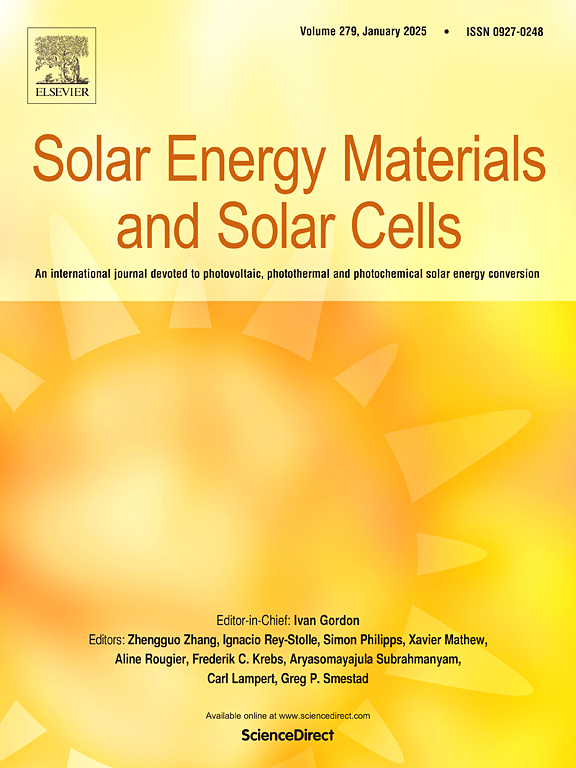Waterbased electrically conductive adhesive for PERC-type shingled solar cells
IF 6.3
2区 材料科学
Q2 ENERGY & FUELS
引用次数: 0
Abstract
This study explores the development of innovative, environmentally friendly water-based electrically conductive adhesives (ECAs) designed specifically for interconnecting shingled passivated emitter rear cell (PERC) solar cells. Formulated with silver (Ag) microflakes and optimized polymeric additives, these adhesives aim to enhance electrical conductivity, adhesion strength, and reliability under real-world operating conditions of solar cells. By reducing reliance on conventional solvent-based adhesives, the water-based ECAs offer significant environmental benefits, including reduced volatile organic compound (VOC) emissions and improved handling safety, aligning with sustainable manufacturing practices. Through systematic experimental analysis and detailed characterization, the water-based adhesives demonstrated a yield stress of 4.8 MPa and a low volume resistivity of 22 μOhm-cm at a film thickness of 25 μm. A 0.4 % increase in power conversion efficiency is obtained compared to commercial counterparts. This efficiency improvement is attributed to the uniform dispersion and stabilization of Ag microflakes within the adhesive matrix, enabled by water-based dispersion techniques. These findings highlight the feasibility and effectiveness of water-based ECAs as a viable interconnection method, providing a balance of high conductivity and eco-friendliness. This research advances sustainable, cost-effective adhesive solutions in photovoltaic technology and beyond, aiding the industry's shift toward cleaner and more efficient solar cell production.
求助全文
约1分钟内获得全文
求助全文
来源期刊

Solar Energy Materials and Solar Cells
工程技术-材料科学:综合
CiteScore
12.60
自引率
11.60%
发文量
513
审稿时长
47 days
期刊介绍:
Solar Energy Materials & Solar Cells is intended as a vehicle for the dissemination of research results on materials science and technology related to photovoltaic, photothermal and photoelectrochemical solar energy conversion. Materials science is taken in the broadest possible sense and encompasses physics, chemistry, optics, materials fabrication and analysis for all types of materials.
 求助内容:
求助内容: 应助结果提醒方式:
应助结果提醒方式:


